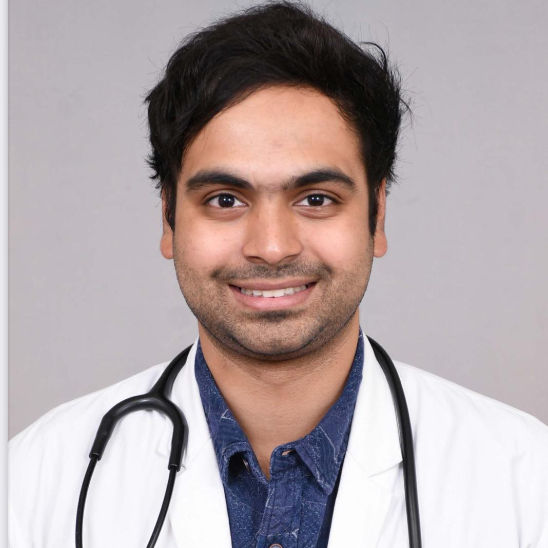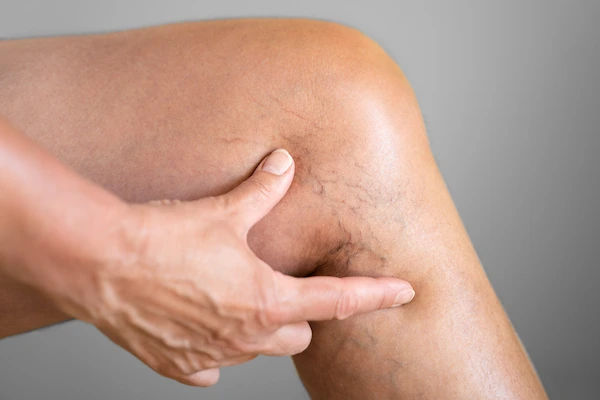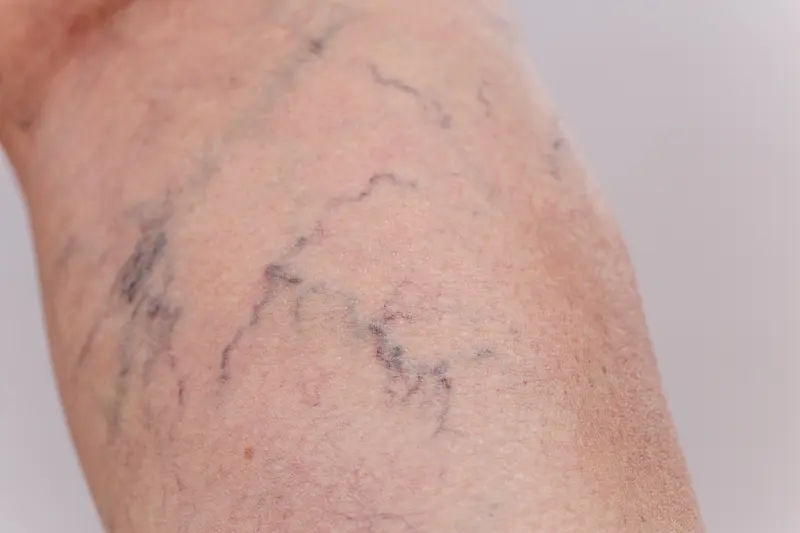Guide to Varicose Veins Know About Its
Varicose veins are more than a cosmetic issue—they can cause pain, swelling, and circulation problems. Learn their causes, symptoms, risk factors, and effective treatments, from home remedies to minimally invasive procedures.

Written by Dr. Md Yusuf Shareef
Reviewed by Dr. Rohinipriyanka Pondugula MBBS
Last updated on 16th Sep, 2025

Are you noticing bulging, bluish-purple veins snaking down your legs? You're not alone. Varicose veins are a common condition affecting millions, often causing more than just cosmetic concern. They can lead to aching pain, swelling, and a heavy feeling in the legs. But what exactly are they, and when should you seek help? This comprehensive guide will walk you through everything you need to know about varicose veins—from their underlying causes and tell-tale symptoms of varicose veins to the latest treatment for varicose veins. We'll also explore practical prevention strategies and advise on when it's crucial to consult a medical professional. Understanding this condition is the first step toward finding relief and improving your vascular health.
What Are Varicose Veins? Understanding the Basics
Varicose veins are enlarged, twisted veins that typically appear on the legs and feet. They occur when the one-way valves inside your veins become weak or damaged. Normally, these valves keep blood flowing upward toward the heart. When they fail, blood pools in the veins, causing them to stretch, twist, and become visible under the skin. While any vein can become varicose, the condition most frequently affects the legs and feet due to the pressure of standing and walking upright.
Varicose Veins vs. Spider Veins: What's the Difference?
It's common to confuse varicose veins with spider veins, but they are not the same. Spider veins are smaller, finer, red or blue vessels that look like spider webs or tree branches. They are closer to the skin's surface and are primarily a cosmetic issue, rarely causing physical discomfort. Varicose veins, on the other hand, are larger, deeper, and can cause significant leg pain and other health complications related to venous insufficiency.
What Causes Varicose Veins? The Science Behind Faulty Valves
The primary cause of varicose veins in legs is chronic venous insufficiency (CVI). As we age, our veins can lose elasticity, causing them to stretch. The valves inside them may weaken, allowing blood that should be moving toward your heart to flow backward. This backflow pools the blood, causing the veins to become varicose.
Key Risk Factors That Increase Your Chances
Several factors can increase your risk of developing this condition:
- Age: The natural wear and tear on vein valves over time is a significant factor.
- Sex: Women are more likely to develop them, partly due to hormonal changes during pregnancy, pre-menstruation, or menopause.
- Pregnancy: Increased blood volume and pressure from the growing uterus on veins in the legs can lead to varicose veins during pregnancy.
- Family History: If other family members had them, your risk is higher.
- Obesity: Excess weight puts additional pressure on your veins.
- Prolonged Standing or Sitting: Jobs that require long periods in one position hinder blood flow.
Recognizing the Symptoms: More Than Just a Cosmetic Concern
For many, the first sign is the visible, gnarled, dark blue or purple veins. However, the symptoms of varicose veins often extend beyond appearance:
- An aching or heavy feeling in the legs
- Burning, throbbing, muscle cramping, and swelling in the lower legs
- Worsened pain after sitting or standing for a long time
- Itching around one or more of your veins
- Skin discoloration around a varicose vein
When Should You Be Concerned? Signs to Watch For
While often manageable, varicose veins can sometimes lead to more serious problems. If you experience any of the following, it's a sign to seek medical attention:
- A sudden, painful swelling in your leg.
- Sores or a rash near your ankle.
- The skin on your leg becomes thick and changes color.
A vein becomes red, tender, or warm to the touch—a potential sign of a blood clot (superficial thrombophlebitis).If your condition does not improve after trying lifestyle methods, or if you notice these severe symptoms, book a
physical visit to a doctor with Apollo24|7 for a proper evaluation.
Consult a Specialist for Personalised Advice
How Are Varicose Veins Diagnosed?
Diagnosis is typically straightforward. A doctor will conduct a physical exam, looking at your legs while you're
standing to check for swelling. They will also likely ask about any leg pain or symptoms. To get a detailed view of the blood flow and check for venous insufficiency, a duplex ultrasound is the gold standard. This non-invasive test uses high-frequency sound waves to create images of the veins and map the direction of blood flow, identifying any faulty valves or blood clots.
Effective Treatment Options for Varicose Veins
The best treatment for varicose veins depends on the severity of your symptoms, the size of the veins, and your overall health. Options range from self-care to surgical procedures.
Lifestyle and Home Remedies for Management
For mild cases, home remedies for varicose veins can reduce discomfort and prevent worsening:
- Exercise: Walk regularly to improve leg strength and circulation.
- Weight Management: Shedding excess pounds reduces pressure on veins.
- Elevation: Raise your legs above your heart level for 15 minutes several times a day.
Avoid Long Periods of Sitting/Standing: Shift your weight and take short walks frequently.
Compression Stockings: The First Line of Defence
Often the first approach before moving to other treatments, compression stockings steadily squeeze your legs, helping veins and leg muscles move blood more efficiently. They are widely available and can effectively relieve the aching legs and swelling associated with milder cases.
Minimally Invasive Procedures (Endovenous Treatments)
For more persistent or severe varicose veins, several outpatient procedures are highly effective.
Sclerotherapy
A doctor injects a solution into the vein, causing it to scar and collapse. The vein fades within a few weeks. It's excellent for smaller varicose and spider veins.
Endovenous Laser Ablation (EVLA) & Radiofrequency Ablation (RFA)
These are popular treatment for varicose veins. Using ultrasound guidance, a doctor inserts a thin catheter into the vein. Laser or radiofrequency energy is then applied, which heats and seals the vein shut. The treated vein is eventually absorbed by the body.
Surgical Options for Severe Cases
For large, severe veins, procedures like ligation and stripping (tying off and removing the vein through small incisions) or ambulatory phlebectomy (removing smaller veins through tiny punctures) may be recommended. These are less common now due to the success of less invasive methods.
Can You Prevent Varicose Veins? Proactive Steps to Take
You can't always prevent them, especially if genetics are a factor, but you can improve circulation and muscle tone to reduce your risk:
- Stay active and maintain a healthy weight.
- Eat a high-fiber, low-salt diet to prevent water retention and constipation.
- Elevate your legs when resting.
- Change your sitting or standing position regularly.
- Avoid high heels and tight hosiery; opt for low-heeled shoes and looser clothing.
Potential Complications of Untreated Varicose Veins
While many cases are mild, ignoring severely symptomatic varicose veins can lead to complications like:
- Ulcers: Painful ulcers can form on the skin near varicose veins.
- Bleeding: The veins close to the skin can burst, causing minor bleeding.
- Blood Clots: Occasionally, deep veins within the legs can become enlarged and painful, potentially leading to deep vein thrombosis (DVT), a serious condition requiring immediate medical attention.
Conclusion
Living with varicose veins can be uncomfortable and sometimes worrying, but you have numerous options for management and treatment. From simple lifestyle adjustments like regular walking and leg elevation to advanced medical procedures, effective strategies can significantly improve your symptoms and quality of life. Remember, these veins are more than a cosmetic issue; they are a medical condition related to your circulation. Paying attention to your body and taking proactive steps is key. If you're experiencing persistent leg pain, swelling, or are concerned about the appearance of your veins, don't hesitate to seek professional advice. If symptoms persist beyond two weeks, consult a doctor online with Apollo24&7 for further evaluation and to discuss the best path forward for your vascular health.Consult a Specialist for Personalised Advice
Consult a Specialist for Personalised Advice
Dr. Naziya Rahim Bhatia
General Surgeon
7 Years • MBBS ,MS
Bengaluru
Apollo Clinic, Sarjapur Road, Bengaluru

Dr. Mainak Baksi
General Practitioner
13 Years • MBBS , MD (MPH)
Howrah
Mainak Baksi Clinic, Howrah
(50+ Patients)

Dr. Jacqueline M. Kuruvilla
General Practitioner
8 Years • MBBS
Bengaluru
Apollo Clinic, Sarjapur Road, Bengaluru

Dr Bhargav Vuppumalla
General Physician/ Internal Medicine Specialist
5 Years • MBBS MD GENERAL MEDICINE
Bengaluru
Apollo Medical Center, Marathahalli, Bengaluru

Dr. Tapabrata Ray
General Physician/ Internal Medicine Specialist
4 Years • MBBS,DGM,CPMeC,ACMDC
Kolkata
MCR SUPER SPECIALITY POLY CLINIC & PATHOLOGY, Kolkata
Consult a Specialist for Personalised Advice
Dr. Naziya Rahim Bhatia
General Surgeon
7 Years • MBBS ,MS
Bengaluru
Apollo Clinic, Sarjapur Road, Bengaluru

Dr. Mainak Baksi
General Practitioner
13 Years • MBBS , MD (MPH)
Howrah
Mainak Baksi Clinic, Howrah
(50+ Patients)

Dr. Jacqueline M. Kuruvilla
General Practitioner
8 Years • MBBS
Bengaluru
Apollo Clinic, Sarjapur Road, Bengaluru

Dr Bhargav Vuppumalla
General Physician/ Internal Medicine Specialist
5 Years • MBBS MD GENERAL MEDICINE
Bengaluru
Apollo Medical Center, Marathahalli, Bengaluru

Dr. Tapabrata Ray
General Physician/ Internal Medicine Specialist
4 Years • MBBS,DGM,CPMeC,ACMDC
Kolkata
MCR SUPER SPECIALITY POLY CLINIC & PATHOLOGY, Kolkata
More articles from Varicose Vein
Frequently Asked Questions
1. Can varicose veins go away on their own?
No, once they appear, varicose veins will not disappear without treatment. However, symptoms can be managed effectively with lifestyle changes and compression therapy, preventing them from getting worse.
2. What is the best home remedy for painful varicose veins?
Regular walking, elevating your legs above your heart for 15-20 minutes several times a day, and wearing compression stockings are among the most effective home remedies for varicose veins to relieve pain and swelling.
3. Are varicose veins dangerous?
In most cases, they are not dangerous but can be uncomfortable. However, in severe cases, they can lead to complications like ulcers, bleeding, or blood clots. It's important to have them evaluated by a doctor to assess your individual risk.
4. Can I exercise if I have varicose veins?
Yes, exercise is highly encouraged! Activities like walking, swimming, and cycling improve circulation in the legs and strengthen calf muscles, which helps pump blood back to the heart. Avoid heavy weightlifting that strains downward.
5. What is the difference between treatment for varicose veins and spider veins?
Spider veins vs varicose veins treatment often overlaps. Sclerotherapy is common for both. However, larger varicose veins may require more advanced treatments like endovenous laser or radiofrequency ablation, while spider veins often respond well to sclerotherapy or surface laser treatments.



